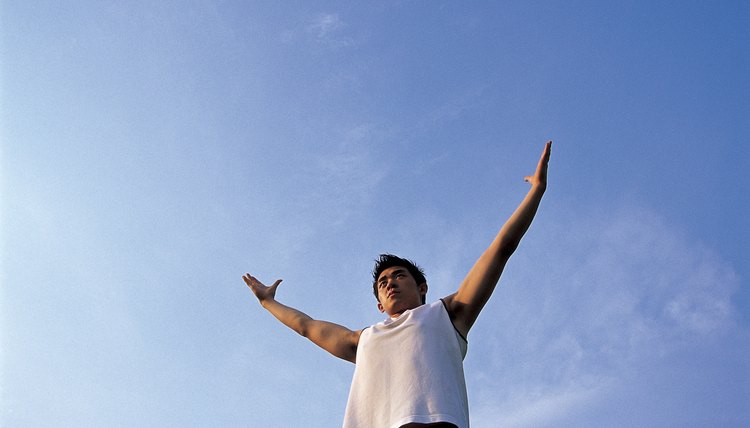What does fact checked mean?
At SportsRec, we strive to deliver objective content that is accurate and up-to-date. Our team periodically reviews articles in order to ensure content quality. The sources cited below consist of evidence from peer-reviewed journals, prominent medical organizations, academic associations, and government data.
The information contained on this site is for informational purposes only, and should not be used as a substitute for the advice of a professional health care provider. Please check with the appropriate physician regarding health questions and concerns. Although we strive to deliver accurate and up-to-date information, no guarantee to that effect is made.
Which Muscles Stretch Your Arms Over Your Head?

The overhead arm stretch uses and targets different muscles. The muscles you are stretching cannot be the same ones that are contracting or you would not experience a nice stretch. If you've held your arms overhead for long periods of time, such as for painting or cleaning, you have felt the tiring effects of the overhead reach on your shoulders, but other muscles are also used for this motion.
Stretch It Out
The overhead arm stretch targets your sides, including the obliques and your latissimus dorsi of your back. As you stand with your feet hips-width apart, reach both arms over head and clasp your fingers together. Turn up your palms and raise your arms upward. Press down your shoulders. Breathe normally as you maintain the stretch for 15 to 30 seconds. The overhead stretch is used on a daily basis or as needed to increase your torso flexibility.
Broad Shoulders
The movement of raising your arms overhead is known as shoulder flexion. Flexion is a bending in a joint that decreases the joint angle. When you raise your arms overhead, your deltoids -- the muscles of your shoulders -- perform shoulder flexion. The deltoids have three heads to the muscle, but the two primarily used in shoulder flexion are the anterior and lateral, or front and middle heads.
Tall and Proud
The pectorals, the muscles of your chest, are also used for shoulder flexion. The pectoralis major is shaped like a triangle across your chest. A portion of the pecs attach to your collar bone and to your upper arm bone. When the pecs contract, the distance between these two bones is shortened, raising your arms.
Beautiful Biceps
The last set of muscles used for your overhead reach are the biceps and coracobrachialis of the arms. The short head of the biceps shares a shoulder blade tendon with the coracobrachialis. These two upper arm muscles, contract to aid in the overhead raising of your arms. Strong upper arms make it easier for you to maintain the overhead reach and enjoy longer benefits of the stretch.
References
Writer Bio
A mother of two and passionate fitness presenter, Lisa M. Wolfe had her first fitness article published in 2001. She is the author of six fitness books and holds an Associate of Arts in exercise science from Oakland Community College. When not writing, Wolfe is hula-hooping, kayaking, walking or cycling.
